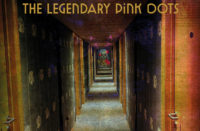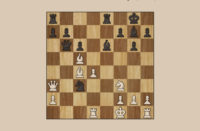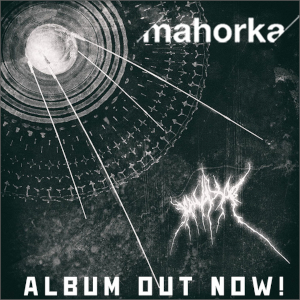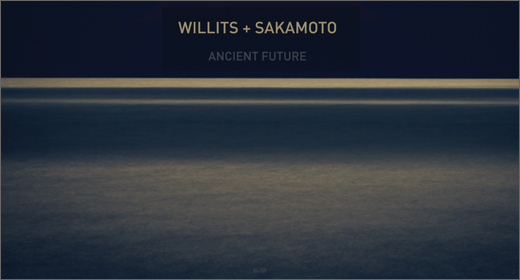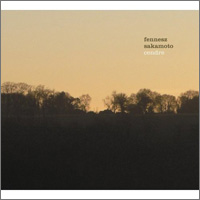 (07.24.07) Neo-experimental giants engage in post-digital East-West soundclash summit. Post-synthetic encounters post-digital generation. Big in Japan, Vast in Vienna. Ryuichi Sakamoto, reputation (post-YMO) forged in questing neo-classical cum electronic auteur territory, now finds his trajectory crossing that of Christian Fennesz, whose severely (mis)treated guitar cut a swathe through the laptop hordes to gain him elevation as digital detritus deity.
(07.24.07) Neo-experimental giants engage in post-digital East-West soundclash summit. Post-synthetic encounters post-digital generation. Big in Japan, Vast in Vienna. Ryuichi Sakamoto, reputation (post-YMO) forged in questing neo-classical cum electronic auteur territory, now finds his trajectory crossing that of Christian Fennesz, whose severely (mis)treated guitar cut a swathe through the laptop hordes to gain him elevation as digital detritus deity.
These two established a tenuous Tokyo/Vienna connection on 2005’s Sala Santa Cecilia, its single 19-minute overture standing in contrast to Cendre‘s less expansive, albeit similarly configured, pieces. Ideas and sounds were exchanged F-2-F and online, then separately locally finished. Sakamoto’s piano meanders in semi-structured melodicity, occasionally digging into more abstracted nooks, blending after-Debussy neo-classicism with ECM-like boutique jazz-moderne. Meanwhile Fennesz spreads a veil of discreet guitar-sourced shimmer or swirls of soft static across the backdrop. The resultant tonal poesis is intermittently engaging, but frequently contents itself with being merely decorative, as if a workmanlike rather than transformative Zen garden were thought sufficient for the would-be contemplator. Tracks like opener “Oto” and the closing “Abyss” make for elegant bookending études, but there are other pieces which fail to take off, and a couple that find the pair in unempathic conversation. In theory, the feistier fizzier Fennesz and the softer syrupier Sakamoto should work as foils to each other, but moments of spark-striking are fleeting (in this respect it’s a less synergetic coupling than Sakamoto-Alva Noto on Vrioon and Insen). Their parts sometimes merely rub up against each other rather than meshing, or, worse, make gestures at interplay while betraying themselves with a tell-tale air of after-the-event graft-on. The two best tracks are the gorgeous “Haru,” whereon Sakamoto is at his most lyrical and focused, with Fennesz providing the velvet drapes, and “Kuni,” which finds Fennesz finally asserting his guitar’s primacy, and the listener is spared Satie-ation as his sidekick’s constant tinkle is finally muted. The guitar-foregrounded approach also serves the title track well, though this could, a few distant block piano chords aside, equally be a more timid outtake from Fennesz’s own Venice.
Some have spoken of Cendre as a post-digital ancestor of much-loved ambient classic The Pearl, with Fennesz presumably playing Eno to Sakamato’s Budd, but neither roles nor sensibilities seem quite analogous. More crucially, little on Cendre achieves the level of emotive caché or pillowed resonance of The Pearl. Placed against Budd’s mercurial ellipsis, Sakamoto’s piano seems a thing of literal-minded over-elaboration, his act all method. Eno’s presence is as subtle “treatment” to Budd’s essentially solo performance, capturing existing resonance and milking it to release further texturality. Fennesz, however, no mere tinter of environments he, flits between front and back room perches, sometimes falling between the two. Added to this, the whole has an over-formalist finish, suffused with a strangely starch-collared reverence, as if each were so a-glow in the other’s reflected past glory they forgot to push the experimental envelope. Still with its moments of beauty, but ultimately Cendre feels reined in by its complacency, weighed down by its own perceived weight, and what worked over Sala Santa Cecilia‘s 20-minute stretch struggles to compel over 50 minutes and 11 variations.
Cendre is out now on Touch. [Purchase]







